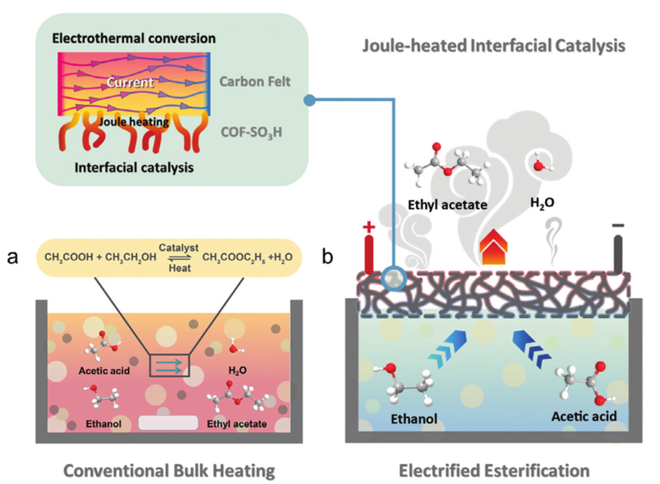
A recent study led by Prof. YIN Huajie from the Hefei Institutes of Physical Science of the Chinese Academy of Sciences introduces an innovative way to improve esterification reactions, which are key processes in industries such as chemistry, perfumery, and pharmaceuticals.
The new method, published in Advanced Materials, uses a system called Joule heating interface catalytic (JIC), to make the reaction much more efficient.
Esterification reactions are important, but they present challenges. These reactions tend to be reversible and have low reactivity, which means it's hard to get high yields. Traditional methods often require the addition of extra alcohol or dehydrating agents, which can be expensive, wasteful, and make it difficult to separate the products.
To overcome these challenges, the researchers developed a new electrified esterification pathway using the JIC system.
"What is unique here is that it uses the electrothermal source and the catalyst together," said Prof. YIN.
This system combines Joule heating and interface catalysis, which helps separate products directly during the reaction and speeds things up. The JIC system uses a special catalyst made of a sulfonic acid-functionalized covalent organic framework (COF-SO3H) and carbon felt as an electrothermal source.
Under the right conditions, with a 1:1 ratio of reactants, the system achieved an impressive 80.5% conversion rate of acetic acid—much higher than the theoretical limit of 62.5%.
This study not only improves the efficiency of esterification reactions, but also provides an energy-efficient, sustainable way to power high-yield chemical processes.

a. Conventional Bulk Heating method; b. JIC system for electrified esterification. (Image by YIN Huajie)

86-10-68597521 (day)
86-10-68597289 (night)

52 Sanlihe Rd., Xicheng District,
Beijing, China (100864)

